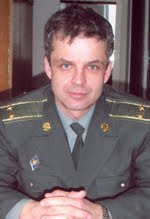Saturday, February 27, 2016
President Poroshenko ordered Defense Ministry to strengthen positions along Black Sea coast
Posted by Oleg Bezverkhnii at 16:37 0 comments
Friday, February 26, 2016
First shipment of Westinghouse fuel delivered to Ukraine’s Zaporozhye from Sweden’s Västerås.
Posted by Oleg Bezverkhnii at 17:36 0 comments
Sunday, February 21, 2016
Photoexhibition “Hello Georgia” in Poltava
Posted by Oleg Bezverkhnii at 00:45 0 comments
Wednesday, February 17, 2016
Royal Air Force jets sent to intercept Russian bombers heading to UK
Posted by Oleg Bezverkhnii at 21:24 0 comments
Ukrainian government survives no-confidence vote
Posted by Oleg Bezverkhnii at 09:00 0 comments
Sunday, February 14, 2016
View on Ukraine through old drawings
Posted by Oleg Bezverkhnii at 11:34 0 comments
Friday, February 12, 2016
The Soviet flying tank A-40
Posted by Oleg Bezverkhnii at 08:33 0 comments
Thursday, February 11, 2016
Ukraine's state-run Antonov aircraft company starts flight testing of engine for An-178
Posted by Oleg Bezverkhnii at 20:18 0 comments
Wednesday, February 10, 2016
NATO to help develop Ukrainian Special Forces
Posted by Oleg Bezverkhnii at 09:16 0 comments
Sunday, February 7, 2016
Russian menace pushes Sweden towards Nato
Posted by Oleg Bezverkhnii at 09:08 0 comments

















